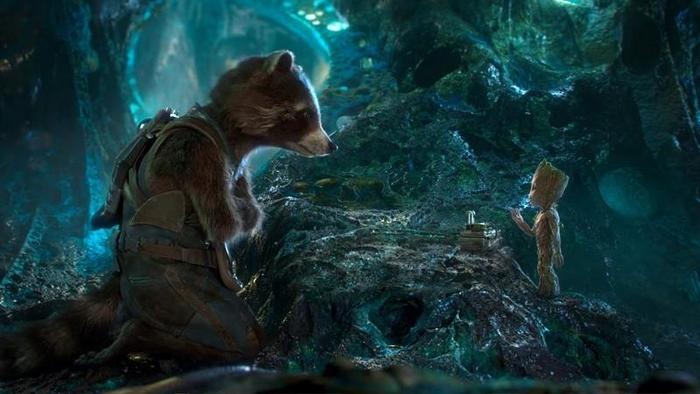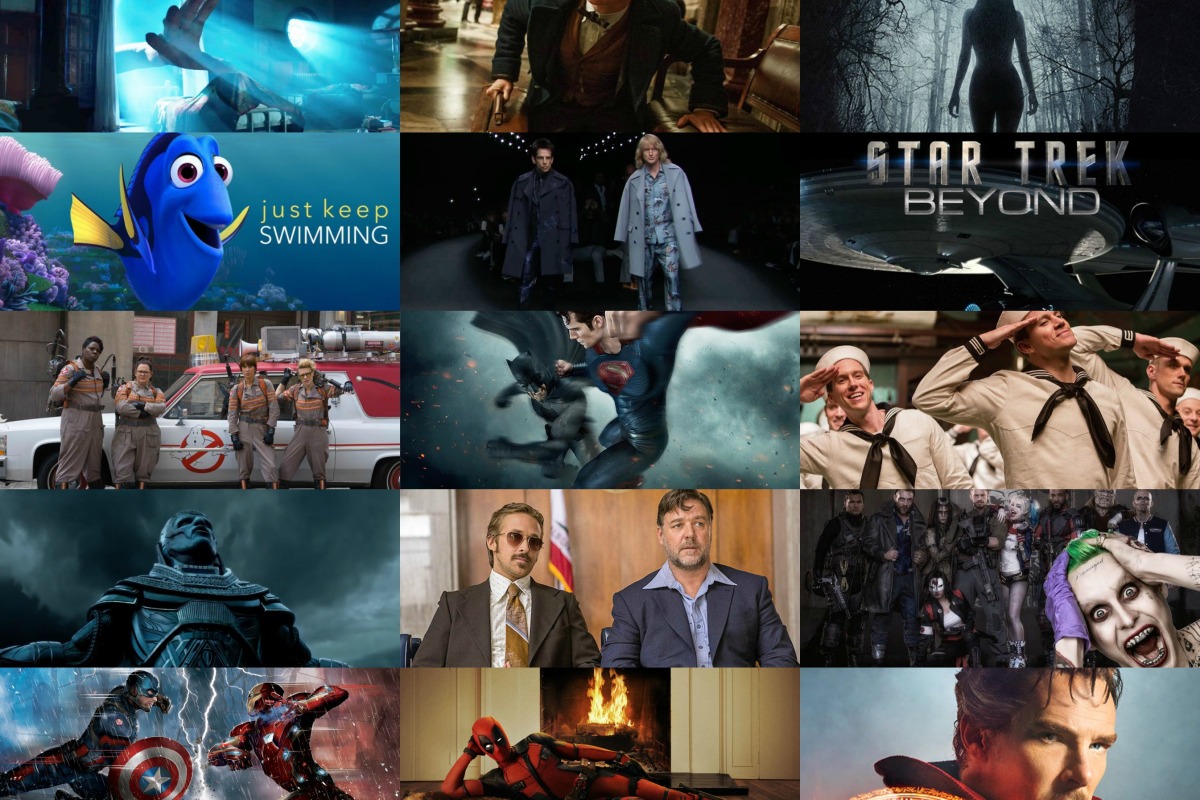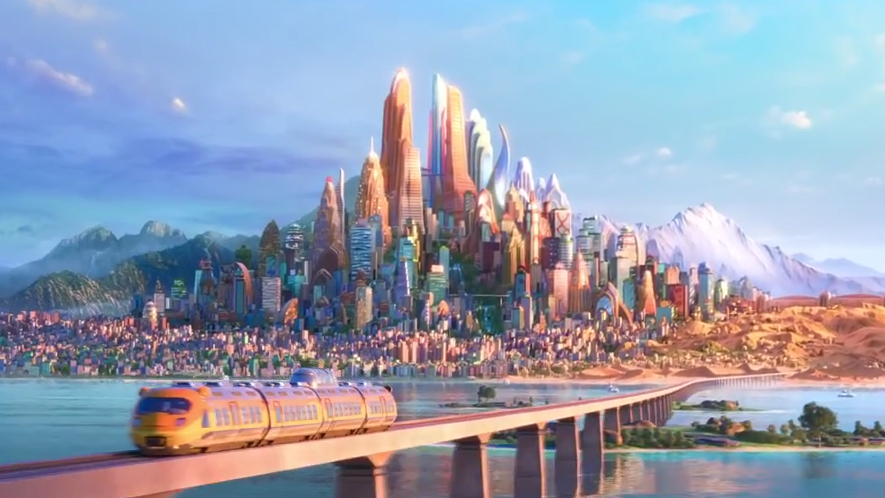For the first time since the superhero film boom of the 21st Century, Marvel Studios, 20th Century Fox, Warner Bros., and Sony Pictures have all received Certified Fresh ratings on Rotten Tomatoes for their blockbuster superhero films in the same calendar year. With Spider-Man: Homecoming‘s release, that firmly puts the average critic rating at 7.5/10 with ~90% positive critic scores.
So what does this mean for the future of superhero movies? Well, for one, it means that, despite the numerous predictions of “superhero fatigue,” these superhero films are still being well-received by both critics and audiences. More importantly, the success of each of these films can, in some ways, provide a template for the movie studios to keep filling their superhero cinematic universes with films that audiences can enjoy. With that in mind, let’s take a look at how these films earned their Fresh rating, how the next film(s) can attain another Fresh rating, and various pitfalls to avoid. We’ll be going in order of the studio that needs the least amount of help to the one that needs the most.
- Guardians of the Galaxy Vol. 2 (Marvel Studios; Marvel Cinematic Universe)

Ironically enough, we’re starting off with the film with the least favorable reviews of the bunch, but in a universe that I believe needs the least amount of help. Like them or not, Marvel Studios has been building their cinematic universe for almost a decade now and started the trend in the first place. If anybody is going to be in good shape, it’s going to be them.
How They Earned Their Fresh Rating: From the looks of the critical consensus, Guardians of the Galaxy Vol. 2 earned its Fresh rating through most of the ways that other Marvel movies have: irreverent humor and an action-packed story. The wrinkle here is that Guardians of the Galaxy Vol. 2 features “dazzling visuals” from the directorial eye of James Gunn, known for striking cinematographic choices. I personally praised it for going into a fresh new direction than the last film.
Pitfalls to Avoid: While the MCU films haven’t gotten outright negative reviews, plenty of people have level common criticisms for the majority of the films. They tend to have underdeveloped villains (save GotG Vol. 2), most of the films look washed-out and devoid of color (save GotG and Dr. Strange), most of the films’ scores are unmemorable (save GotG), nearly all of the films use humor to undercut serious moments, and nearly all of the films are starting to lose a sense of tension due to the awareness of the slate of sequels.
How to Earn Another Fresh Rating: Honestly, even if the next Marvel films don’t address those previous criticisms, there’s a good chance that they’ll receive positive reviews regardless. Again, Marvel Studios have been doing enough superhero films to know what works and what doesn’t. Going into Thor: Ragnarok and Black Panther, all they’d need to do is to keep applying what they already know works: likable protagonists, lived-in world-building, good supporting characters that the protagonist can properly bounce off of, and proper emotional development for the audience to invest in.
- Logan (20th Century FOX; X-Men franchise)

To put it bluntly, the X-Men franchise is very hit-and-miss when it comes to the quality of their films. While they have essentially been building a superhero universe before Marvel Studios even existed, it was 1) not a cinematic universe in the sense that we know today and 2) not even close to being perfected. In some ways, the inconsistency made me hesitate to put it higher than the next one, but overall, 20th Century FOX has been ~4.5 for 6 since X-Men: First Class.How They Earned Their Fresh Rating: Honestly, 20th Century FOX kind of stumbled onto a one-of-a-kind film. There might not be another superhero film that expresses the kind of sheer emotional resonance found in Logan. A culmination of nearly two decades of superhero media and one man portraying a single character across nine films (only two of which he is not the lead) put Logan in a unique position to take advantage of emotional attachments that were built over years and years and years. Furthermore, said actor is giving the performance of a lifetime along with his other two co-stars. However, one thing that is undeniable is that it cornered a market that Marvel Studios seems too afraid to explore themselves: R-rated superhero films. By carving out a “niche” for the 17+ crowd, the X-Men franchise has been able to get away with a lot more explicit violence that the MCU can’t, while also appearing as the superhero universe for “mature audiences.” It’s one of the riskiest moves for a superhero universe that’s actually paid off.
Pitfalls to Avoid: It’s tough to capture 17 years of bad X-Men film trends in broad brushstrokes. However, one trend that I’ve noticed has to do with cramming so many characters into a single film they lose their entire purpose of being in the film (see X-Men: The Last Stand and X-Men: Apocalypse). Furthermore, poor creative decision-making has haunted the franchise from sewing “Deadpool’s” mouth shut in X-Men Origins: Wolverine to turning Apocalypse into a generic Ivan Ooze-looking mutant with unclear powers and motivations. Then, there’s some laughably bad CG across some of the films (particularly X-Men Origins: Wolverine.) Basically, the small scale/budget of movies like Deadpool and Logan benefited from avoiding these tropes.How to Earn Another Fresh Rating: Unlike several other superhero universes, not much is known about the future projects of the X-Men franchise. It’s well-known that Deadpool 2 will feature Cable, but it also had the misfortune of losing Deadpool director Tim Miller. There’s also New Mutants on deck as well as X-Men: Dark Phoenix. My advice would be to keep the cast size small or to anchor the story around 1-2 characters. I don’t think it’s a coincidence that Bryan Singer’s only bad X-Men film is the one where he didn’t anchor around Wolverine. If possible, get good creative in-house talent like Matthew Vaughn or James Mangold to make more X-Men films.
- Spider-Man: Homecoming (Sony Pictures; Spider-Man franchise/Marvel Studios; Marvel Cinematic Universe)

How They Earned Their Fresh Rating: You know how Sony’s Amazing Spider-Man films tried to do everything that the Raimi films did but worse, while also cramming in every Sinister Six tie-in they could? It turns out that all Marvel Studios had to do was do the complete opposite of that and it resulted in a good Spider-Man movie. Who would’ve thought that creativity, coherent plot structure, relatable villains, a consistent tone, easily discernible character motivations, proper characterization, a lack of Sony product placement, a lack of cynical tie-ins, a lack of creative bankruptcy, a lack of cringe-inducing pop songs that don’t fit the scene whatsoever, and a lack of incessant studio meddling would make for a movie that feels like a movie (and not a cynical corporate cash-grab that only exists to avoid the film rights from going back to their original owner)?
Pitfalls to Avoid: First and foremost, if you’re Sony Pictures, EXTEND YOUR AGREEMENT WITH MARVEL STUDIOS IMMEDIATELY. AVOID MAKING ANY CREATIVE DECISIONS ON YOUR OWN. DO ANYTHING AND EVERYTHING TO MAKE SURE THAT PEOPLE WHO KNOW SPIDER-MAN BEST ARE IN CHARGE OF YOUR SPIDER-MAN MOVIE. THIS MOVIE OPENED TO $117 MILLION DOMESTICALLY (Sony, please. You like money, right? Do the right thing.)If that isn’t possible, then by the time Spider-Man: Homecoming 3 rolls around, you’ll have a likable protagonist with a solid cast of supporting characters and at least 3 villains to choose from (given they aren’t killed off in Homecoming 2). Focus on making a good movie rather than a movie that advertises another upcoming movie. Don’t introduce new characters unless they have a very good reason to be included (this was the problem with Spider-Man 3 and The Amazing Spider-Man 2.) Avoid studio meddling at all costs, especially if your director has proven that he can make a good movie (this was the problem with Spider-Man 3, The Amazing Spider-Man, and The Amazing Spider-Man 2.) Keep that laundry list of things that have been done-to-death with Spider-Man (Uncle Ben’s death, the origin story, focus on the conflict between Spider-Man’s dual identity/romantic interest, sympathetic scientist-types who turn into villains, etc.) and avoid repeating previous villains (this was the problem with… you get the idea).
How to Earn Another Fresh Rating: Since Sony Pictures is hell-bent on creating their own Spider-Man Cinematic Universe, starting with an R-rated Venom film, an animated Miles Morales Ultimate Spider-Man film, a Silver Sable spinoff, and a Black Cat spinoff, there probably isn’t anything I can do to convince them to stop spinning off their properties.
Sony Pictures have taken a step in the right direction by making sure there is a respectable level of talent within their upcoming films. The R-rated Venom film will star Tom Hardy (Mad Max: Fury Road, The Revenant, The Dark Knight Rises) and the animated Ultimate Spider-Man film touts a script written by Phil Lord and Chris Miller (The LEGO Movie, 21/22 Jump Street, Cloudy with a Chance of Meatballs). One suggestion I would have is to get Genndy Tartakovsky (Samurai Jack, Dexter’s Laboratory, Star Wars: Clone Wars, and The Powerpuff Girls) to direct the animated Ultimate Spider-Man film. He’s already directed two feature films for Sony Animation and is arguably the most stylistic director of animation working today. Getting him to direct a project as important as this could also make up for his canceled Popeye project as well as put his unique action direction to use.
However, the most far-reaching piece of advice that I could give to Sony Pictures is to STOP interfering in the creative production of their blockbusters.
- Wonder Woman (Warner Bros.; DC Extended Universe)

How They Earned Their Fresh Rating: Anchoring a fairly simple war story behind a likable heroine in Diana Prince/Wonder Woman, who is well-captured by Gal Gadot, and her sympathetic love interest Steve Trevor, well-captured by Chris Pine; both of whom are well-directed by Patty Jenkins. The closest thing to a “controversial casting choice/unpopular character interpretation” concerns someone who appears towards the end of the film (and even at that, they aren’t too far of a resemblance from another character). Action scenes are informed by Diana’s need to protect.
Pitfalls to Avoid: While Wonder Woman does have a fair bit of criticism for its use of CG and its somewhat inconsistent conclusion, it’s a huge step in the right direction for the DCEU (which looked D.O.A prior to the film’s release). Wonder Woman’s WWI environment was appropriate for washed-out color-grading, but other films that feature more hopeful/lighter-hearted heroes will require a more vibrant color palette.
If there’s one thing that Wonder Woman should teach the DCEU, it should be to focus on establishing a likable hero. Much of Man of Steel and Batman v Superman‘s criticisms had to do with their bleak, almost cynical outlook on heroism for both characters. Superman seemed burdened to be a hero and Batman seemed like a psychotic, gun-toting murderer. Neither of these characterizations is likable, which is a huge issue when it comes to a superhero movie. Let your heroes be heroes and stop forcing them to doubt whether they should act heroicly or not.
Likewise, Warner Bros. should stop forcing directors outside of their comfort zone. Giving David Ayer 6 weeks to write a script and promptly reshooting Suicide Squad to fit in a bunch of forced jokes probably wasn’t the best use of his talents. Similarly, they should allow the team who actually worked on the film from principal shooting to actually edit their own film. Getting a trailer company to edit Suicide Squad might be the single dumbest thing any movie studio has done in at least a decade. It should go without saying that something this stupid should never ever be attempted again.
Lastly, the DCEU should avoid making unpopular creative decisions with iconic characters like Lex Luthor, The Joker, and Jimmy Olsen. I know there’s an argument to be made that doing the same thing over with these characters could grow stale, but I’d rather have familiar characters that make sense than outrageous characters that look dumb and act cringeworthy. Warner Bros. was never plagued with the same character fatigue that plagued the Spider-Man series since seemingly everyone still loves Batman and Superman hasn’t been all that relevant in recent years. In my opinion, the character reimaginings were unnecessary, so long as they stayed away from stale elements (like say, Batman’s parents being shot in front of him). By contrast, Wonder Woman stuck to what they knew with appropriate characterizations and benefited from not out-thinking themselves.
How to Earn Another Fresh Rating: One advantage that DCEU films have is this: People want to like their movies. Their characters are iconic and they have a plethora of great villains. So, give them a reason to like these movies. While it may seem like the “dishonorable thing” to do, Wonder Woman’s reception might have something to do with following Marvel’s model for telling good superhero stories. Establish a likable protagonist, support them with good characters to bounce off of, and create some emotional development for the audience to invest in. After the DCEU has a few well-received films under its belt, THEN it can deconstruct ideas of what it means to be a hero, reimagine iconic characters, and attempt ensemble films. For now, keep it basic and stick to what works with the added wrinkle that the villain doubles as a supporting character to bounce the protagonist off of (see Christopher Nolan’s The Dark Knight trilogy). Unfortunately, the next film is Justice League, a Zack Snyder-directed ensemble film that looks to introduce 4-5 new major characters and establish relationships right off the bat (man). We’ll see if it can learn from Wonder Woman‘s achievements, but if anything, Wonder Woman has allowed the DCEU at least 1-2 more critical bombs before audiences give up hope entirely. Perhaps 2018’s Aquaman, which takes place in a similar mystical setting, can apply lessons learned from Wonder Woman.
All in all, the fact that every single superhero release in 2017 has become Certified Fresh is nothing short of outstanding news for superhero film fans everywhere. While it’s unlikely that this may ever happen again (or may still be valid if either Thor: Ragnarok or Justice League get Rotten reviews), the superhero genre looks like it isn’t going away anytime soon. As moviegoing audiences, the best we can do is to hold these films to the high standard that this hot streak suggests they are capable of.

























